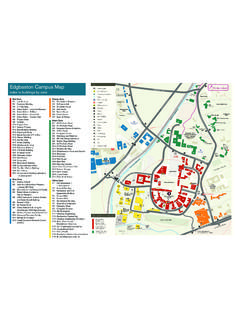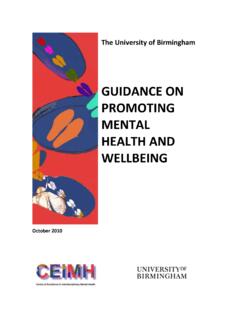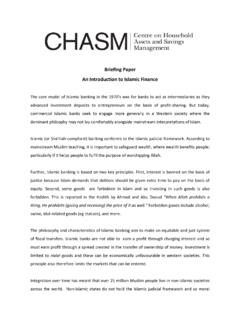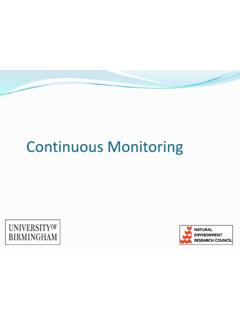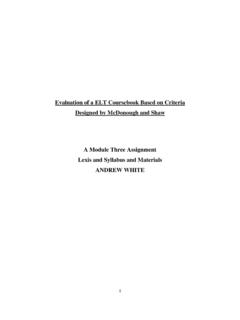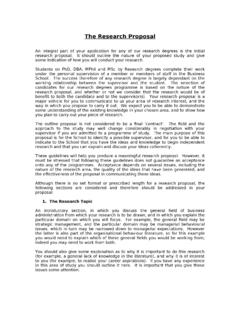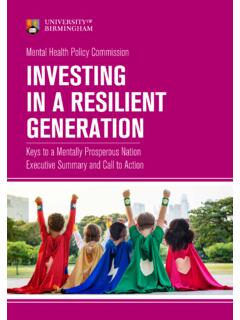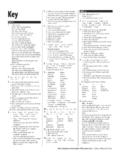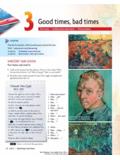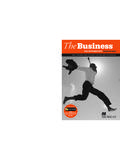Transcription of An Evaluation of New Headway Upper-Intermediate
1 An Evaluation of New Headway Upper-Intermediate James M. Ranalli, University of Birmingham, March 2002 Word Count (excluding long quotations, tables, footnotes and appendices): 4,443 Module Three Assignment Topic SM/01/03 Make a detailed Evaluation of a coursebook or set of materials that is used in your own working context. You should consider both the syllabus followed and the methodology employed. 1 Introduction This purpose of this paper is to evaluate New Headway Upper-Intermediate , one of the coursebooks used at the Foreign Language Institute of Yonsei University in Seoul, Korea where I work. The paper will follow this format: after describing the evaluative framework to be employed, I will comment on the particulars of my working situation and the country and cultural contexts.
2 Next, I will evaluate the book according to four general guidelines, with particular emphasis on the syllabus and methodology used, illustrating my points with excerpts from the book as well as references to claims made by the authors and relevant outside sources. I will close with a summary and overall Evaluation in which the reader will learn that, despite certain shortcomings related especially to methodology, the book is in general deemed satisfactory for our purposes. 2 Background to the study The evaluative framework: Cunningsworth s four guidelines For the purposes of this Evaluation , I will adopt the four-guideline approach proposed by Cunningsworth (1995: 15-17). These guidelines are broad principles that underlie much longer and more familiar checklists of the type commonly used in predictive evaluations, those done when choosing a book for a certain course (Ellis, 1997: 36).
3 By themselves, however, the guidelines support the present academic investigation by allowing detailed comment on the syllabus and methodology employed. They also follow a logical progression from general to particular. Cunningsworth s four guidelines are as follows: Guideline One: Coursebooks should correspond to learners' needs. They should match the aims and objectives of the language learning program. Guideline Two: Coursebooks should reflect the uses (present and future) which learners will make of the language. Select coursebooks which will help to equip students to use language effectively for their own purposes. Guideline Three: Coursebooks should take account of students needs as learners and should facilitate their learning processes, without dogmatically imposing a rigid method. 2 Guideline Four: Coursebooks should have a clear role as a support for learning.
4 Like teachers, they mediate between the target language and the learner. The working context My working context is a language institute attached to a major Korean university. The courses are not-for-credit, are aimed at the general public and usually consist of 100 hours of instruction over 10 weeks. The learners range in age from 21-65 and include university students, working people, housewives and retirees who are usually studying English for one or more of the following reasons: for academic purposes (many intend to study abroad in the future); to help obtain better jobs or promotions; for international travel; and for general interest s sake. The stated goal of the Yonsei English program is to produce learners who can speak English both accurately and fluently. The basic courses focus on general English with an emphasis on oral communication.
5 In the case of most levels at the institute, there is no external syllabus the coursebook represents the syllabus. Sinclair and Renouf would criticize this as a degenerate syllabus (1988: 146) and argue that an external syllabus is necessary, but care is taken at the institute among the level coordinators to choose books whose contents complement, rather than overlap each other and which fit the general needs of the learners. The country/cultural context By the time they graduate high school, most adult Koreans have studied English for at least seven years. This instruction has traditionally concentrated on reading skills, vocabulary and grammatical form, although successive national curricula have tried to put more emphasis on communicative competence, functional over grammatical syllabuses, and fluency over accuracy (Kwon, 2000: 60-61).
6 Oral communication traditionally has been under-emphasized, with the result that the average Korean learner of English will have received only 210 lifetime hours of listening and speaking instruction (Kim and Margolis, 2000: 39). For this reason, courses like the one at Yonsei University are seen by both teachers and students alike as aiming at the activation of passive knowledge . The typical student is one who McDonough and Shaw describe as having a very good usage background but [who] needs a course which will activate language use (1993: 68). Learners expect lessons to be engaging and motivating, in contrast to the boring methods they experienced in their school days. Lessons are expected to emphasize oral communication through pair- and group-work but must generally include a focus on form also.
7 3 Despite the contrasts with traditional state-school instruction, classes at institutes like Yonsei s are still influenced by the Confucianism which infuses Korean attitudes toward education. Teachers, even if non-Korean, are still seen to be main actors in the classroom and learning English is still typically viewed as a teacher-centered process rather than a student-centered effort. (Park and Oxford, 1998: 107). As we shall see, this has implications for the methodology to be employed. 3 Guideline One: Learner needs and program aims Coursebooks should correspond to learners' needs. They should match the aims and objectives of the language learning program. Statement of audience, aims and objectives According to the authors, New Headway Upper-Intermediate is meant for use by adult and young adult learners and provides about 120 hours of language learning (Soars and Soars, 1998).
8 The authors claim that the course combines the best of traditional methods with more recent approaches, to help students use English both accurately and fluently . These traditional approaches emphasize a clear focus on grammar with in-depth analysis and explanation, thorough practice activities, and the exploitation of texts for comprehension and stylistic appreciation. On the other hand, communicative approaches are also employed which emphasize the importance of individual students' contributions to work out rules for themselves, and to express personal opinions. This combination of the traditional and the communicative appears to be key to the Headway philosophy. The underlying premise seems to be that traditional approaches are effective in developing formal competence but in themselves are not enough.
9 This idea has a strong history among methodologists and coursebook writers. Writing about teaching approaches found in coursebooks before the advent of the communicative approach, McDonough and Shaw note that: .. language learners were required, above all, to manipulate grammatical forms accurately, and .. this procedure was the main measure of competence in a foreign language .. It was argued that this type of teaching produced structurally competent students who were often communicatively incompetent (Johnson, 1981), able perhaps to form correct sentences .. but unable to transfer this knowledge to talk about themselves in a real-life setting (1993: 21) 4 Hence the need to supplement with communicative approaches, which aim to (a) make communicative competence the goal of language teaching and (b) develop procedures for the teaching of the four language skills that acknowledge the interdependence of language and communication.
10 (Richards and Rodgers, 1986: 66). Headway s authors present the equation as simple: make up for the deficiencies of one approach by supplementing from another. But as we shall see in section 5 on methodology, this combination of form-focused and meaning-focused modes of instruction is potentially problematic and not at all straightforward. General organization Further insight into the aims and objectives of the book can be gleaned from the contents map, which illustrates the general organization of the material. Figure 1 below shows two sample units. Language Input Skills Development Unit Grammar Vocabulary Postscript Reading Speaking Listening Writing 6 People, places and things Relative clauses -ed/-ing adjectives Synonyms in context English signs The man who could buy anything a gap-fill exercise about Bill Gates I ve never seen anything like it a strange person, place, and a thing Describing a picture Exchanging information about a strange person, place and thing Group work devising an advert Seven radio ads Describing your favorite part of town 7 Doing without Verb patterns Reduced infinitives Consumer durables Hot verbs (with get)
